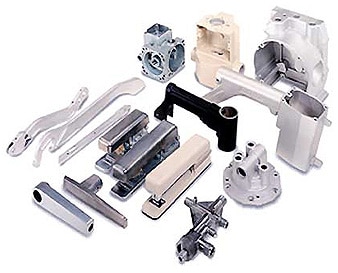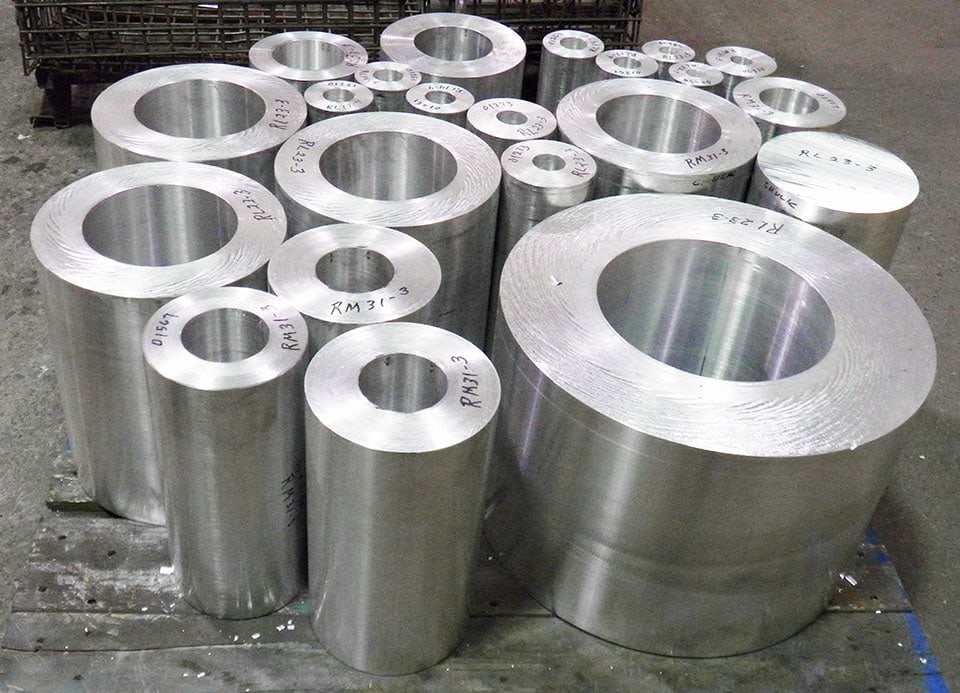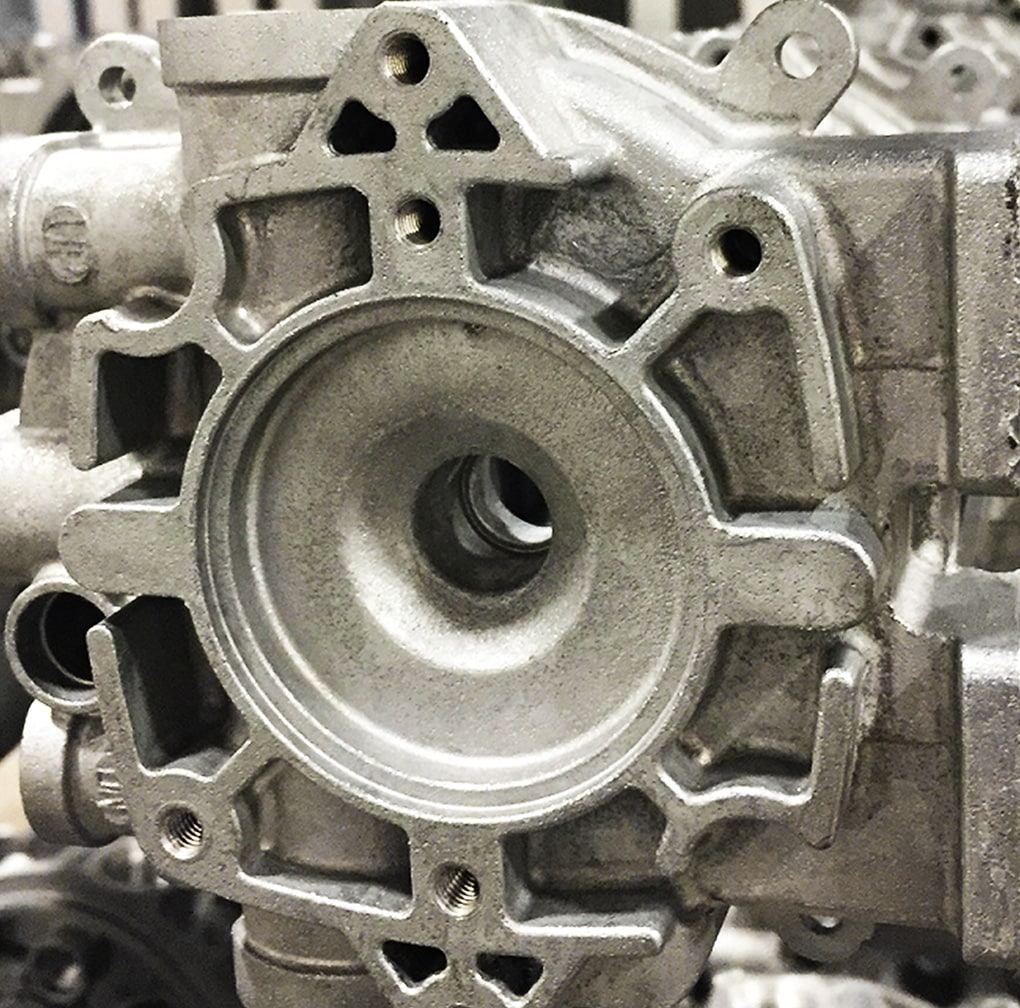Exploring new trends and technologies in Metal Castings
Wiki Article
Revealing the Advantages and Practical Use Light Weight Aluminum Castings in Today's Market
Light weight aluminum spreadings have come to be significantly pertinent in different industries as a result of their unique attributes. Their light-weight nature and resistance to rust make them ideal for demanding applications. Furthermore, the premium strength-to-weight proportion supplies significant benefits in design and production. As sectors remain to discover their capacity, the complete extent of light weight aluminum castings' applications and advantages remains to be completely discovered. What exists in advance for this versatile product?The Lightweight Advantage of Aluminum Castings
Many materials are used in production, light weight aluminum spreadings stand out primarily due to their light-weight residential properties. This characteristic makes light weight aluminum castings an attractive selection for numerous industries, particularly in aerospace and vehicle applications, where weight reduction is important for enhancing gas performance and efficiency. The light-weight nature of aluminum permits manufacturers to develop components that are easier to set up and manage, inevitably minimizing labor prices.The capacity to create intricate shapes without substantial weight charges makes it possible for designers to innovate while preserving structural honesty. Light weight aluminum castings can properly change larger products, causing substantial savings in shipping and functional costs. Their light-weight benefit also contributes to improved product durability, as lighter elements usually cause reduced damage on machinery. Overall, the light-weight buildings of light weight aluminum spreadings offer producers with an one-upmanship, promoting improvements in item layout and performance across various markets.

Remarkable Corrosion Resistance
Light weight aluminum castings possess a natural resistance to oxidation, which greatly improves their longevity in numerous environments. This integral residential property not just contributes to their durability however also aligns with the lightweight benefit that aluminum offers. Consequently, aluminum castings are increasingly identified for their extraordinary corrosion resistance in many applications.
Naturally Immune to Oxidation
Among the standout characteristics of light weight aluminum castings is their remarkable corrosion resistance, which stems from an all-natural oxidation procedure. When exposed to air, light weight aluminum reacts to form a thin, protective layer of aluminum oxide. This layer functions as an obstacle against further oxidation and shields the underlying metal from corrosive elements such as wetness and salts. Unlike other steels, this oxide layer is self-repairing; if damaged, it swiftly reforms when revealed to air. This unique residential or commercial property boosts the durability of aluminum spreadings in different environments, making them perfect for applications in sectors such as aerospace, automotive, and marine. The all-natural resistance to oxidation greatly reduces upkeep prices and enhances the integrity of light weight aluminum castings in requiring conditions.Light-weight Durability Advantage
The lightweight nature of aluminum spreadings contributes significantly to their longevity, making them a helpful option in numerous industries. This outstanding toughness is mainly connected to light weight aluminum's innate resistance to rust, which is enhanced additionally with anodizing and other surface area treatments. Unlike lots of steels, aluminum does not rust; rather, it forms a protective oxide layer that shields it from environmental damage. This property is specifically valuable in industries such as auto and aerospace, where weight decrease is vital without compromising strength. Additionally, the longevity of aluminum spreadings lessens upkeep prices and substitutes, providing financial benefits with time. Their light-weight sturdiness and rust resistance placement aluminum castings as an exceptional product for modern-day production applications.
Superior Strength-to-Weight Proportion
An amazing attribute of light weight aluminum spreadings is their remarkable strength-to-weight ratio, which makes them highly desirable in various applications. This intrinsic property enables light weight aluminum castings to endure considerable stress while continuing to be lightweight, a vital factor in markets such as aerospace, automotive, and manufacturing. Designers commonly favor aluminum spreadings for parts that call for both sturdiness and reduced weight, improving gas efficiency and performance.The high strength-to-weight ratio likewise promotes the style of intricate shapes and frameworks, making light weight aluminum castings flexible for complicated applications. Moreover, the capability to preserve architectural honesty under tough conditions guarantees longevity and reliability in items, from airplane frameworks to automobile components. This advantage adds to the expanding trend of using light weight aluminum castings in innovative designs, inevitably bring about boosted functionality and performance across varied industries. As a result, the superior strength-to-weight proportion of aluminum castings places them as a critical material in contemporary design and production.
Cost-Effectiveness in Production
Cost-effectiveness in aluminum casting manufacturing is largely achieved with lowered product waste and effective manufacturing processes. By maximizing designs and utilizing advanced techniques, suppliers can decrease excess material use while maintaining top quality standards. This strategy not only decreases manufacturing prices but also adds to extra lasting practices within the market.Lowered Product Waste
Decreasing product waste in aluminum spreading procedures significantly boosts production performance. By optimizing the design and manufacturing techniques, business can decrease excess scrap and improve resource usage. This decrease in waste not just lowers product prices but additionally adds to an extra lasting manufacturing model. The ability to recycle aluminum additional assistances cost-effectiveness, permitting manufacturers to reclaim and reuse materials without jeopardizing high quality. As the sector significantly concentrates on sustainability, lowered material waste lines up with ecological objectives while concurrently enhancing success. Eventually, efficient use resources reinforces the affordable placement of organizations in the market, making aluminum castings a desirable choice in different applications. The critical approach to minimizing waste shows a commitment to both economic and ecological duty.Reliable Production Processes
While conventional manufacturing procedures can incur substantial expenses, aluminum casting offers a more efficient choice that improves total production productivity. This approach minimizes product waste and enables exact control over the production procedure, bring about minimized labor and functional expenses. The capability to generate intricate shapes with less steps further improves manufacturing, adding to much shorter preparations. Furthermore, light weight aluminum's light-weight nature and outstanding thermal conductivity allow for power financial savings throughout manufacturing and in the final application. By using modern-day spreading innovations, makers can achieve greater throughput without giving up top quality. Aluminum casting stands out as a cost-efficient solution, making it an attractive alternative for companies intending to enhance their manufacturing processes in today's affordable market.Versatility Across Industries
Light weight aluminum spreadings show amazing flexibility throughout different industries, as they can be customized to satisfy specific requirements and applications. In the automobile sector, light weight aluminum spreadings are made use of in engine blocks, transmission housings, and wheels, supplying lightweight yet durable services that improve fuel efficiency. The aerospace sector additionally gains from aluminum castings, using them in structural parts and engine parts because of their strength-to-weight ratio.In the durable goods market, makers utilize light weight aluminum castings for items varying from pots and pans to furniture, offering both visual appeal and functionality. The electronic devices sector utilizes aluminum spreadings for real estates and heat sinks, guaranteeing reliable thermal management. Additionally, the construction field leverages aluminum castings for architectural aspects and architectural elements, improving toughness and layout adaptability. This wide applicability highlights aluminum castings as a crucial resource, meeting the varied needs of various markets while keeping high performance and integrity.
Sustainability and Ecological Impact
As markets significantly focus on lasting methods, aluminum castings become an eco-friendly choice due to their recyclability and low ecological impact. Aluminum is just one of the most recycled products internationally, with the ability to be repurposed several times without destruction of high quality. This particular considerably lowers the demand for basic materials and energy consumption related to primary aluminum production, which is energy-intensive.Furthermore, light weight aluminum castings contribute to light-weight layouts, bring about sustain effectiveness in transport applications such as aerospace and vehicle industries. Their toughness and resistance to rust extend product lifespans, even more lessening waste and source usage in time. Numerous suppliers are adopting accountable sourcing and ecologically pleasant manufacturing methods, boosting the sustainability of aluminum casting processes. On the whole, light weight aluminum castings stand for a useful remedy for organizations intending to minimize their ecological effect while attaining performance and performance.
Developments in Aluminum Casting Technologies
Recent advancements in light weight aluminum casting modern technologies have substantially improved the effectiveness and quality of manufacturing procedures. Developments such as 3D printing and progressed mold-making techniques have allowed suppliers to develop intricate designs with reduced product waste. This shift not only boosts the accuracy of actors parts however likewise shortens preparations, enabling fast prototyping and faster market access.
Furthermore, the consolidation of innovative computer simulations help in predicting possible defects throughout spreading, causing higher-quality results (Metal Castings). The use of light-weight alloys has also added to the advancement of stronger, extra long lasting products, catering to markets varying from auto Aluminum Foundry to aerospace
Additionally, automated spreading processes have actually arised, lessening human mistake and raising production speed. Collectively, these technologies are changing the aluminum casting landscape, driving better competitiveness and sustainability in production. As industries remain to develop, these modern technologies will certainly play an important role in conference future demands for efficiency and quality.
Often Asked Concerns
Exactly How Do Aluminum Castings Compare to Various Other Metals in Regards To Thermal Conductivity?
Light weight aluminum castings show superior thermal conductivity contrasted to many metals, such as steel and iron - Metal Castings. Their light-weight nature and reliable warm circulation make them perfect for applications calling for efficient thermal administration in different sectorsWhat Are the Typical Problems Found in Light Weight Aluminum Castings?
Common flaws in aluminum spreadings include porosity, shrinkage, additions, and surface area irregularities. These issues typically occur from improper cooling prices, insufficient mold and mildew layout, or contaminations, affecting the overall high quality and performance of the last product.Can Light Weight Aluminum Castings Be Recycled, and Exactly how?
Light weight aluminum castings can be recycled properly. The process involves collecting, melting, and changing the light weight aluminum, which minimizes waste and preserves sources. This reusing adds to sustainability while preserving the product's properties for future usage.What Are the Normal Lead Times for Aluminum Spreading Production?
Usually, preparations for aluminum spreading manufacturing array from two to 6 weeks, relying on aspects such as complexity, tooling demands, and production quantity. Efficiency can improve with established vendor relationships and maximized production procedures.Just how Does the Surface Complete Affect Aluminum Casting Efficiency?
The surface area finish significantly impacts light weight aluminum casting efficiency by influencing deterioration resistance, visual top quality, and rubbing characteristics. A smoother coating boosts sturdiness and capability, while a rougher structure can enhance bond for subsequent finishings or therapies.Lots of products are utilized in manufacturing, aluminum spreadings stand out largely due to their light-weight residential or commercial properties. When subjected to air, aluminum reacts to create a slim, safety layer of aluminum oxide. Cost-effectiveness in aluminum casting production is largely achieved with reduced material waste and efficient production processes. Minimizing material waste in light weight aluminum casting procedures significantly improves production effectiveness. Inevitably, effective usage of raw products reinforces the affordable placement of companies in the market, making aluminum castings a positive alternative in different applications.
Report this wiki page